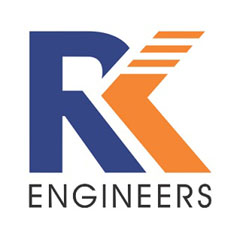Description :
A Solar-powered pump is a pump running on electricity generated by photovoltaic panels. A solar array produces electricity by harnessing the energy from the Sun. A Solar Pump is designed to utilise the direct current from the array efficiently, even as the energy production varies throughout the day. Solar pumps suggest a clean and uncomplicated substitute to fuel burning engines and generators for domestic water, livestock and irrigation. They are more efficient during dry and sunny seasons. Solar Pumps are powered by photovoltaic panels and the flow rate is determined by the intensity or radiation of sunlight. Thus the Solar power pumps are more cost-effective and have not as much of impact on the environment than the pumps operated by the combustion engine.
The
Solar Dual Pump is an innovative pump devised to utilise the power of the sun
during the day and act as a normal hand pump when the sun is not available,
hence assuring uninterrupted water supply, thus eliminating the need of
batteries resulting in low cost and no maintenance hassles. The system consists
of a submersible pump which runs directly on power generated from the
photovoltaic solar cells and is suitable for use on bore wells with 100 mm (and
above) diameter and up to 90 m depth. A submersible pump powered with DC brush
less motor is installed below the hand pump cylinder. The pump is connected to
a storage tank and the collected water is dispensed through a stand post.
During a normal day the pump operates about 7-8 hours between sunrise &
sunset. After sunset user can operate hand pump and obtain water.
AC
Solar Pumps for Drinking Water and for Irrigation :
A photovoltaic solar powered pump system has three parts:
1.
Pumpset
Voltage of the solar pump motors can be AC (alternating
current) or DC (direct current). Direct current motors are used for small to
medium applications up to about 3 kW rating. Since DC systems tend to have
overall higher efficiency levels than AC pumps of a similar size, the costs are
reduced as smaller solar panels can be used. If an alternating current solar
pump is used, an inverter is necessary that changes the direct
current from the solar panels into alternating current for the pump. The
supported power range of inverters extends from 0.15 to 55 kW normally high efficiency
AC pumps are used for drinking water and for irrigation.
2.
Solar Panel
The size of the PV-system is directly dependent on the size
of the pump, the amount of water that is required (m³/d) and the solar
irradiance available. PV panels of required capacity are used in parallel and
series.
3. Controller
Controller is placed in between panel and pumpset which
converts DC current into AC current, the purpose of the controller is two fold.
Firstly, it matches the output power that the pump receives with the input
power available from the solar panels. Secondly, a controller usually provides
a low and high voltage protection; the system is switched off, if the voltage
is too low or too high for the operating voltage range of the pump. This
increases the lifetime of the pump thus reducing the need for
maintenance.
Features of Controller :
- Automatic ON- OFF
- Soft start to control in-rush current
- Field programmable to suit site conditions
- Cumulative kw/hrs recorded & displayed
- In-built protection against phase imbalance
- Under / over voltage motor protection
- Works satisfactorily upto 55 ºC ambient
- Visual indication of faults (blinking LEDs)
- Hybrid – can work on DC or Grid AC
- Maximum Power Point Tracking (MPPT) feature ensures extraction of max power available from the solar panels
- Motor input power gets automatically adjusted by varying the operating frequency
- Selected pump for given site conditions (i.e. Head) and water needs, is ensured to run within the (Best Efficiency)
Applications:
- Irrigation
- Horticultural Farms
- Drinking Water
- Schools & educational institutions
- Health centre’s & hospitals

